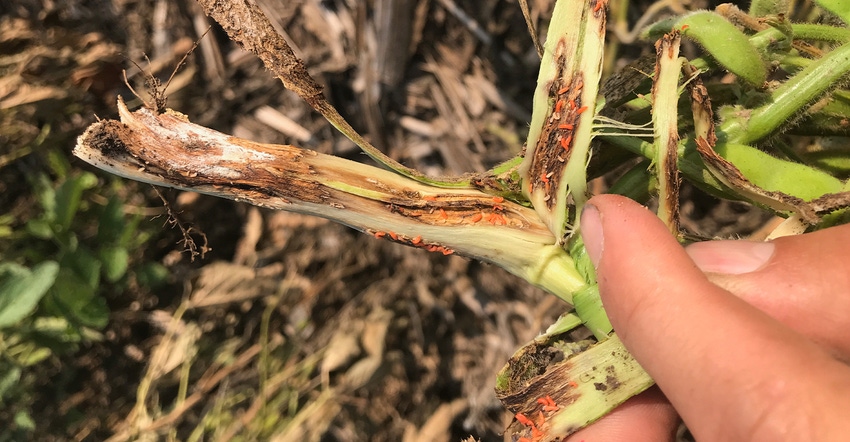July 18, 2019

By Mark Glady
In 2018, small orange midge larvae were found in soybean fields in Nebraska, Iowa and South Dakota, as well as in two Minnesota counties. Now, soybean gall midge has been discovered in seven Minnesota counties: Otter Tail, Stearns, Rock, Olmsted, Sibley, McLeod and Wadena.
 Mark Glady
Mark Glady

I haven’t come across this insect myself or talked with any farmers who have. However, it is worth paying attention to it. Here are five important things to know about soybean gall midge as you assess your pest management plan this season.
1. Severe pressure can cut off nutrient flow. The gall midge enters the plant stem a couple of inches above the soil surface. As the midge increases in size, it will ultimately stop the flow of xylem (the tissue that transports water and minerals from roots to stems and leaves) and phloem (the tissue that transports sugars throughout the plant), cutting off nutrient flow and causing the plant to starve and die.
2. Control is a mystery. Once a gall midge is inside the plant stem, spraying a foliar insecticide will be much less effective because the insect is somewhat protected. It’s not on the outside of the leaves like a soybean aphid would be, so it won’t come into direct contact with the spray.
At this point, we don’t have an answer about how to try to prevent it, and there aren’t any reported incidences of genetic tolerance or resistance to it.
3. There appears to be a link to white mold. According to an article from University of Minnesota Extension, gall midge larvae found in Minnesota were most often associated with sclerotinia white mold. This makes sense, since the sclerotia bodies sprout the mushrooms — or apothecia — of a white mold.
These apothecia then release fungal spores, which usually enter the soybean plant through a dead, dying or decaying flower. If there is a fly that’s poking its stylet into the stem of the soybean plant to lay an egg, that tiny hole could be enough of an opening to allow a fungal spore to enter the plant.
Another scenario is that as the gall midge grows larger in the stem, it appears to crack the stem open. This would also present an open door for fungal spores of white mold to enter the plant and infect it with this disease.
4. Insects tend to travel frequently. Besides laying many eggs during their life cycles, on the whole, insects move around and test out different regions because of competition for food.
Since they reproduce so rapidly, they can quickly adapt to environmental changes, whether that’s colder winters, wetter summers, or hotter and drier conditions. This may explain why insects such as soybean gall midge are moving into our state.
5. Insects are also notoriously difficult to predict. Remember to keep a close eye on your soybean fields for potential gall midge pressure. If you see stem breakage, dark lesions, or wilted or dead plants, split the stem and look for small white to orange larvae inside.
If you find soybean gall midge, contact your agronomist. He or she can steer you to other resources or experts to report the problem to and determine if further consultation is needed with entities such as University of Minnesota Extension.
Glady is a regional agronomist with WinField United in west-central Minnesota. Contact him at [email protected].
You May Also Like




